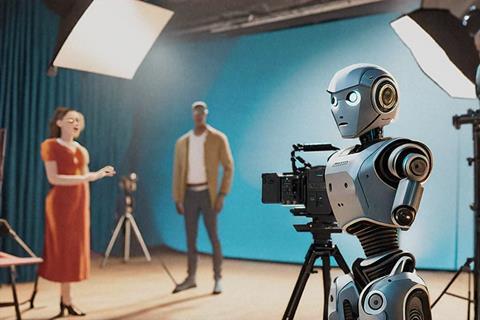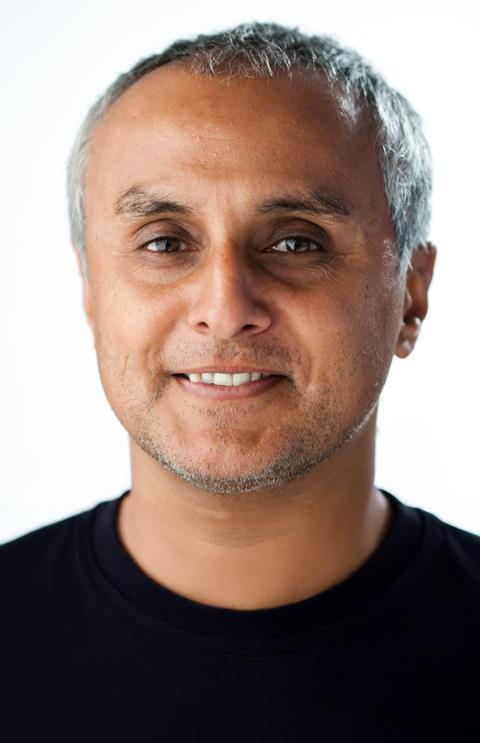Independent filmmaker Perry Bhandal believes AI could level the playing field

Filmmaking has always been an elite pursuit—historically reserved for those with financial backing, industry connections, or institutional support. Generative filmmaking is changing that. For the first time, independent filmmakers can create without gatekeepers. No need for massive budgets, no need to compromise vision to appease investors, and no need for permission from Hollywood.
I know this because I’ve done it. I made Okay, It’s Time To Go—the world’s first fully generative narrative film—without a traditional crew, cast, or production infrastructure. And now, as I work on Episode 2, I’m continuing to push what’s possible in filmmaking using an entirely new kind of camera called Generative AI.
But while generative filmmaking presents an unprecedented opportunity for indie filmmakers, it also comes with serious dangers—ones that could reshape the industry in ways we aren’t prepared for.
The opportunity: A filmmaking revolution
For independent creators, generative filmmaking is a game-changer. It removes the financial and logistical barriers that have long kept many voices out of the industry. Before, making a film required money, connections, and the ability to assemble an entire production team. Now, with the right tools and a deep understanding of cinematic language, one filmmaker can do what once took dozens or even hundreds of people.
That’s not to say generative tools do everything for you—they don’t. The technology is still evolving, but the fundamental skills of storytelling, composition, lighting, framing, and performance always apply. Generative filmmaking allows me to return to an era when incredible care was given to every frame, every visual choice, and every storytelling decision, utilising a new kind of camera—one that doesn’t capture reality but generates it.
More importantly, generative filmmaking puts creative control back into the hands of filmmakers. No interference from producers. No pressure to water down ideas for broader market appeal. Just the story, exactly as the creator intended. This presents an opportunity for filmmakers to reclaim authenticity in an era dominated by mass-produced, CGI-heavy disposable entertainment. I mean, who would have backed me to do a film about the global ramifications of a mass-produced instant suicide stopwatch?
The danger: A coming glut of AI-generated content
While generative tools are incredible, they will also flood the world with low-effort, auto-generated films that have little to no human intervention.
Right now, fully AI-generated films are easy to spot—they lack depth, subtlety, or intentional artistic choices. But that will change. As tools improve, we will see an explosion of AI-generated content, much of it mass-produced with no real creative oversight.
The consequences?
The signal will get lost in the noise.
Platforms like YouTube and TikTok will be flooded with algorithmically generated content. How will audiences separate work that has artistic intent from work that is purely automated?
AI will become a shortcut for studios.
While indie filmmakers use AI for creative freedom, major studios will use it to cut costs. Why fund original stories when AI can generate cheap, risk-free content designed for engagement?
Audiences will struggle to trust what’s real.
As AI-generated actors and performances become indistinguishable from reality, how will we know when we are watching something truly human? When every frame can be fabricated, the very nature of authenticity in film is at risk.
Total disruption: The industry will fight back
For someone like me—who has fully pivoted to generative filmmaking—I no longer need any part of the traditional industry. No actors, no crew, no managers, no agents, no distribution deals. That level of disruption isn’t something Hollywood will take lightly.
So, expect pushback. Unions will demand regulations. Studios will lobby for restrictions. Awards bodies like the Oscars will introduce disclosure requirements. The industry will resist because generative filmmaking fundamentally challenges the system they’ve built.
But the truth is, generative filmmakers adept at using this new camera don’t need Hollywood. Just like streaming disrupted theatrical distribution, generative filmmaking is emerging as a completely independent ecosystem. Indie filmmakers no longer have to beg for funding, wait for approval, or navigate industry politics. They can simply create.
A new era of filmmaking
Generative tools are neither inherently good nor bad—they are simply tools. Like any tools, they can be used to create extraordinary works of art or meaningless content factories. The responsibility lies with the filmmakers.
For indie creators, generative tools are the most powerful equaliser in cinema history. They provide creative control, remove barriers, and allow vision to come first. But they also demand that we stay vigilant, ensuring that what we create isn’t just another flood of algorithmic noise.
Generative filmmaking will not destroy cinema. It will not eliminate great stories or replace human creativity. What it will do is decentralise control, democratise access, and challenge the very foundations of the industry.
That is why it is feared. And that is why it is inevitable.

Perry Bhandal is an independent filmmaker, most recently of Okay, It’s Time To Go








No comments yet